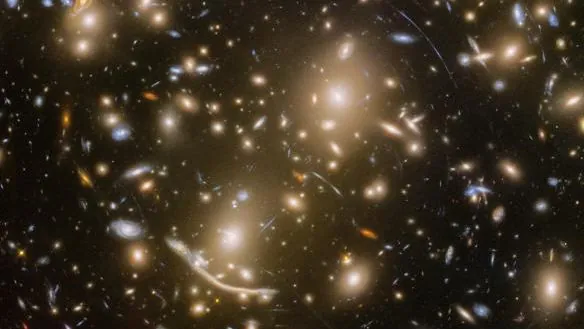
James Webb Space Telescope Breaks Records with Stunning Discovery of 44 Distant Stars!
2025-01-07
Author: Sarah
Introduction
In an astonishing feat for modern astronomy, the James Webb Space Telescope (JWST) has captured breathtaking images of 44 individual stars in a galaxy located halfway across the observable universe. Once deemed impossible by astronomers, this exceptional discovery showcases the sheer power of JWST's technology and the cosmic wonders that lie beyond our reach.
Astronomer's Reaction
Rogier Windhorst, an astronomer from Arizona State University who was part of the discovery team, shared his amazement: "I never dreamed of Webb seeing them in such large numbers. And now here we are observing these stars popping in and out of the images taken only a year apart, like fireflies in the night. Webb continues to amaze us all."
The Significance of the Discovery
But there's more than just lights in the sky. This groundbreaking observation opens up new avenues to explore the mysterious behavior of dark matter, a pervasive but poorly understood component of the universe.
About the 44 Stars
The 44 stars, the largest collective ever observed in the distant universe, belong to a hidden galaxy whimsically nicknamed the Dragon. This galaxy's light, which began its cosmic journey over 6.5 billion years ago—when the universe was still in its formative years—was warped and magnified into elongated tendrils due to gravitational lensing from the Abell 370 galaxy cluster. This cluster serves as a cosmic lens, revealing countless other galaxies and cosmic phenomena that would otherwise remain undetectable.
Characteristics of the Stars
As astronomers examine this extraordinary phenomenon, they discovered that the stars of the Dragon are chiefly red supergiants, in the final throes of their stellar evolution – akin to the famous Betelgeuse in our own constellation Orion, on the brink of its explosive fate.
A Cosmic Trove
Fengwu Sun, a postdoctoral scholar at the Center for Astrophysics | Harvard & Smithsonian and a co-author of this groundbreaking study, stumbled upon this cosmic trove while analyzing images of the Dragon captured by the JWST in both 2022 and 2023. Sun remarked, "When we processed the data, we realized that there were what appeared to be a lot of individual star points. It was an exciting find because it was the first time we were able to see so many individual stars so far away."
Role of Gravitational Lensing
The JWST, renowned for its ability to delve into the depths of space, was assisted serendipitously by gravitational phenomena within Abell 370. As stars in the background hidden galaxy aligned with the lensing cluster, they became even more luminous. This cosmic alignment creates a dynamic lensing landscape that changes over time, allowing the stars' brightness to flicker in what study co-author Nicholas Foo described as a "twinkling Christmas tree" effect.
Conclusion
This remarkable discovery not only highlights the technological prowess of the JWST but also ignites the imagination about the many secrets our universe still holds. With such transformative findings, astronomers are left wondering: what other cosmic treasures remain hidden in the vast expanses of space, waiting for the right moment—or the right technology—to be unveiled? Stay tuned as we continue to explore the universe together!
 Brasil (PT)
Brasil (PT)
 Canada (EN)
Canada (EN)
 Chile (ES)
Chile (ES)
 Česko (CS)
Česko (CS)
 대한민국 (KO)
대한민국 (KO)
 España (ES)
España (ES)
 France (FR)
France (FR)
 Hong Kong (EN)
Hong Kong (EN)
 Italia (IT)
Italia (IT)
 日本 (JA)
日本 (JA)
 Magyarország (HU)
Magyarország (HU)
 Norge (NO)
Norge (NO)
 Polska (PL)
Polska (PL)
 Schweiz (DE)
Schweiz (DE)
 Singapore (EN)
Singapore (EN)
 Sverige (SV)
Sverige (SV)
 Suomi (FI)
Suomi (FI)
 Türkiye (TR)
Türkiye (TR)
 الإمارات العربية المتحدة (AR)
الإمارات العربية المتحدة (AR)